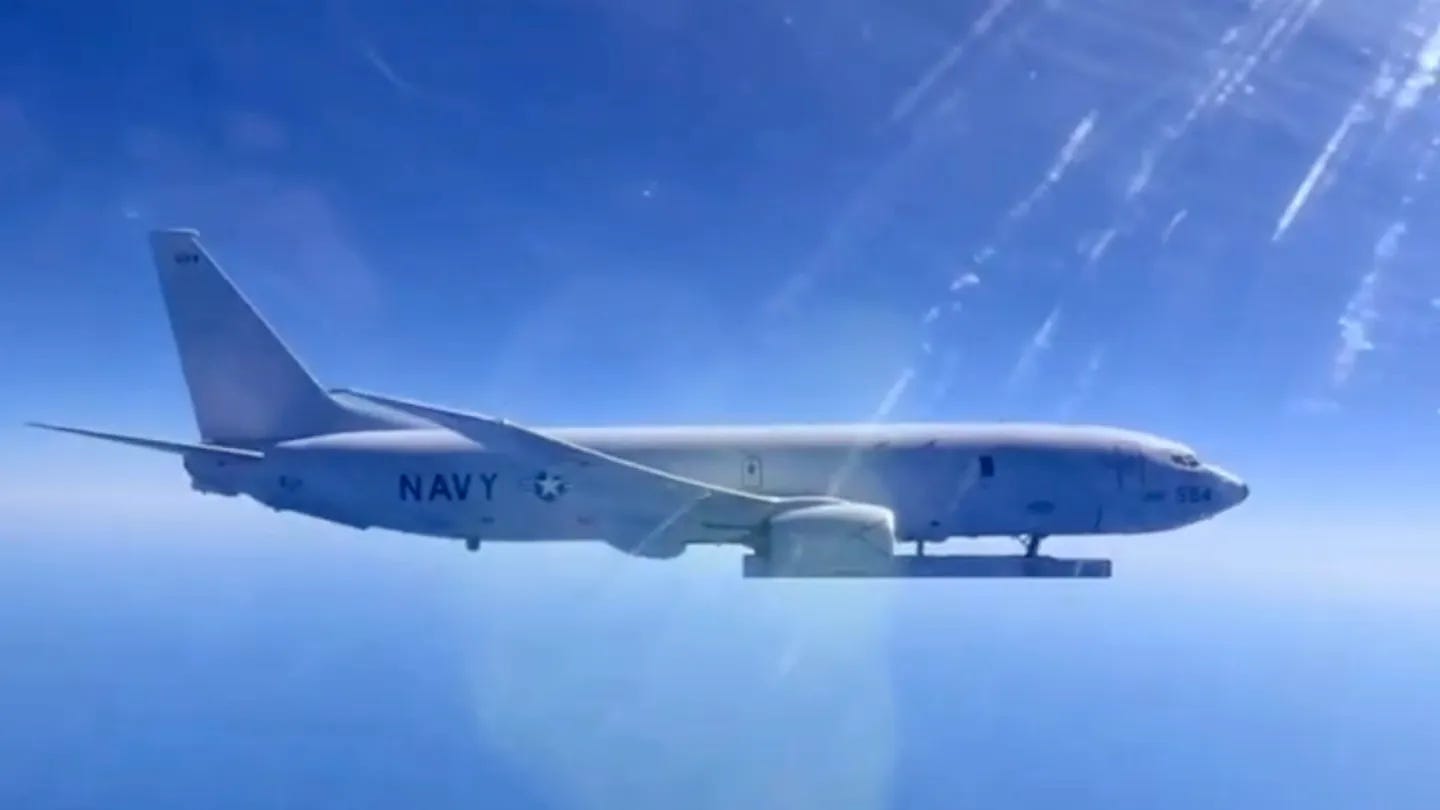The P-8 Poseidon and Its Secret Black Sea Radar Run
Russia intercepted the Poseidon, but not before it collected what it needed.
The Black Sea is already one of the most congested pieces of airspace on the planet. NATO jets, Russian fighters, Turkish surveillance planes, and the occasional Ukrainian Bayraktar still lurking around.
Into this chaos, the US Navy just threw in something new: a P-8 Poseidon reconnaissance jet flying unescorted and carrying a mysterious “secret” radar pod.
Well… “new” as far as we know. The actual number of times the US Navy has flown P-8s over the Black Sea since 2022 is not publicly disclosed.
Russian Telegram channels went wild.
Footage showed Russian fighters intercepting the Poseidon, which in Moscow-speak means “flew nearby, waved aggressively, and went home to brag about it.”
Operationally, NATO typically keeps these birds escorted, but this time the Poseidon was out there solo, which tells us either Washington was making a point or they were very confident that Ivan wasn’t about to pick a fight.
So, what was this secret pod slung underneath? Let’s dig in!
Meet the Poseidon
The Boeing P-8 Poseidon sort of looks like your average airliner, but under the skin, it is less “frequent flyer” and more “silent hunter.”
Built on the frame of a 737, it is stuffed with military-grade sensors, weapons bays, and communications gear that turn it into a Swiss Army knife of maritime and electronic warfare. If the 737 is Southwest Airlines, the P-8 is Southwest Airlines after six energy drinks and a couple of classified modifications from the Office of Naval Intelligence.
Where most aircraft are designed for one or two primary tasks, the Poseidon is built to multitask across a wide spectrum of missions.
First, sub hunter is the Poseidon’s bread and butter.
It can drop sonobuoys that listen for the faintest noise beneath the waves, then stitch that data together to triangulate enemy submarines. Once a target is confirmed, the P-8 can deliver a torpedo from altitude or hand off targeting data to friendly ships.
Against Russia’s aging Black Sea sub fleet, that capability alone makes the Poseidon the most unwelcome guest at Moscow’s maritime dinner table.
It can also track a surface fleet with high resolution.
The Poseidon can also scan wide swathes of ocean for surface contacts. Its radars can pick out a frigate hugging the coast, a corvette pretending to be a fishing boat, or even a logistics vessel sneaking fuel to the front.
Once it finds them, it can either keep a persistent eye on them or pass the data back to NATO strike assets. This is particularly valuable in the Black Sea, where the Russian fleet prefers to hide near Crimean harbors after the Moskva debacle.
Plus, it’s a SIGINT Hoover.
Think of the Poseidon as a flying vacuum cleaner for radio chatter. Its antenna suites are designed to hoover up enemy transmissions, radar emissions, and even cell phone signals bouncing around the battlespace.
Every time a Russian air defense radar switches on or a fleet captain radios home, the Poseidon is quietly logging the data, building a map of Russian electronic order of battle that Ukraine can exploit.
Oh, and an EW tracker. Although not a jammer in the traditional sense, the Poseidon plays a supporting role in electronic warfare by identifying, classifying, and geolocating emitters. This allows NATO or Ukrainian forces to know where radars are, which frequencies they are using, and how to spoof or destroy them.
In some cases, the P-8 can even cue HARM anti-radiation missiles fired from Ukrainian fighters, turning Russian SAM operators into targets the moment they press the “on” button.
Beyond its recon and intel functions, the Poseidon carries teeth. It can be armed with Harpoon anti-ship missiles, meaning that if push came to shove, it could join the fight directly.
Keep reading with a 7-day free trial
Subscribe to Eyes Only with Wes O'Donnell to keep reading this post and get 7 days of free access to the full post archives.



